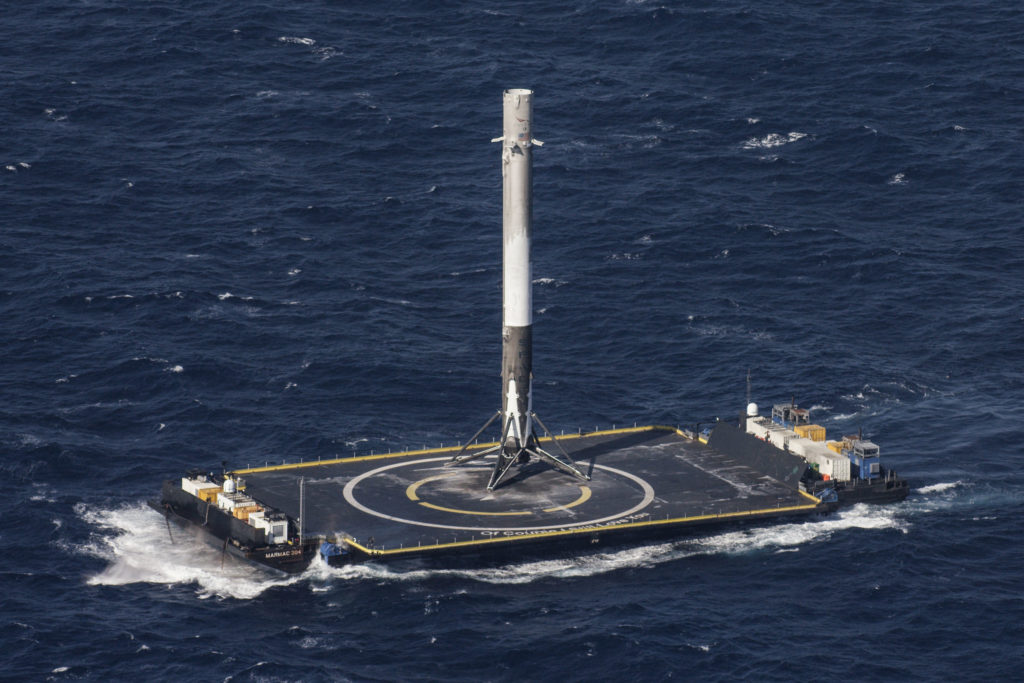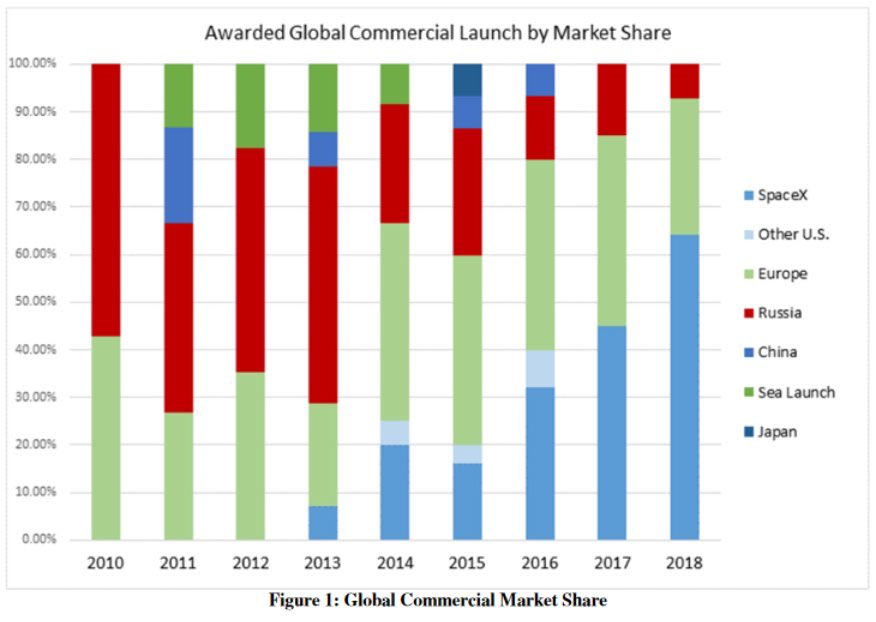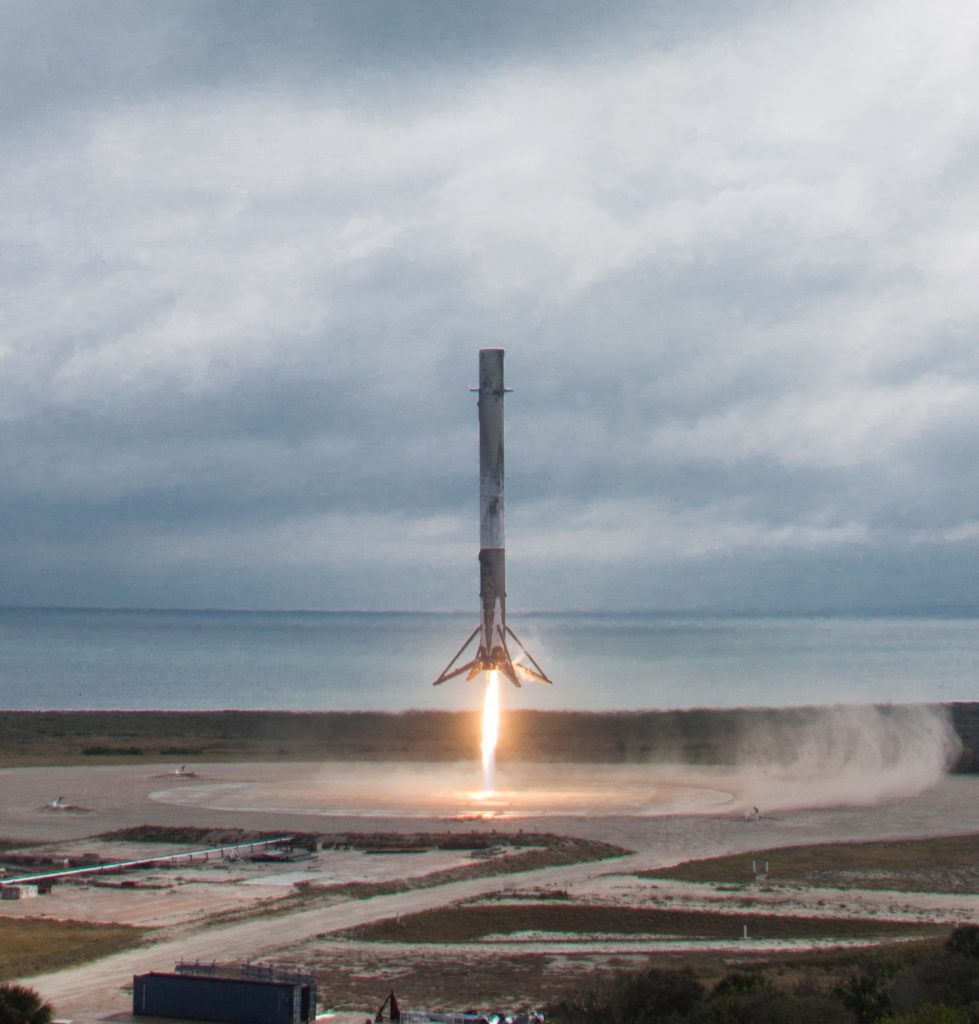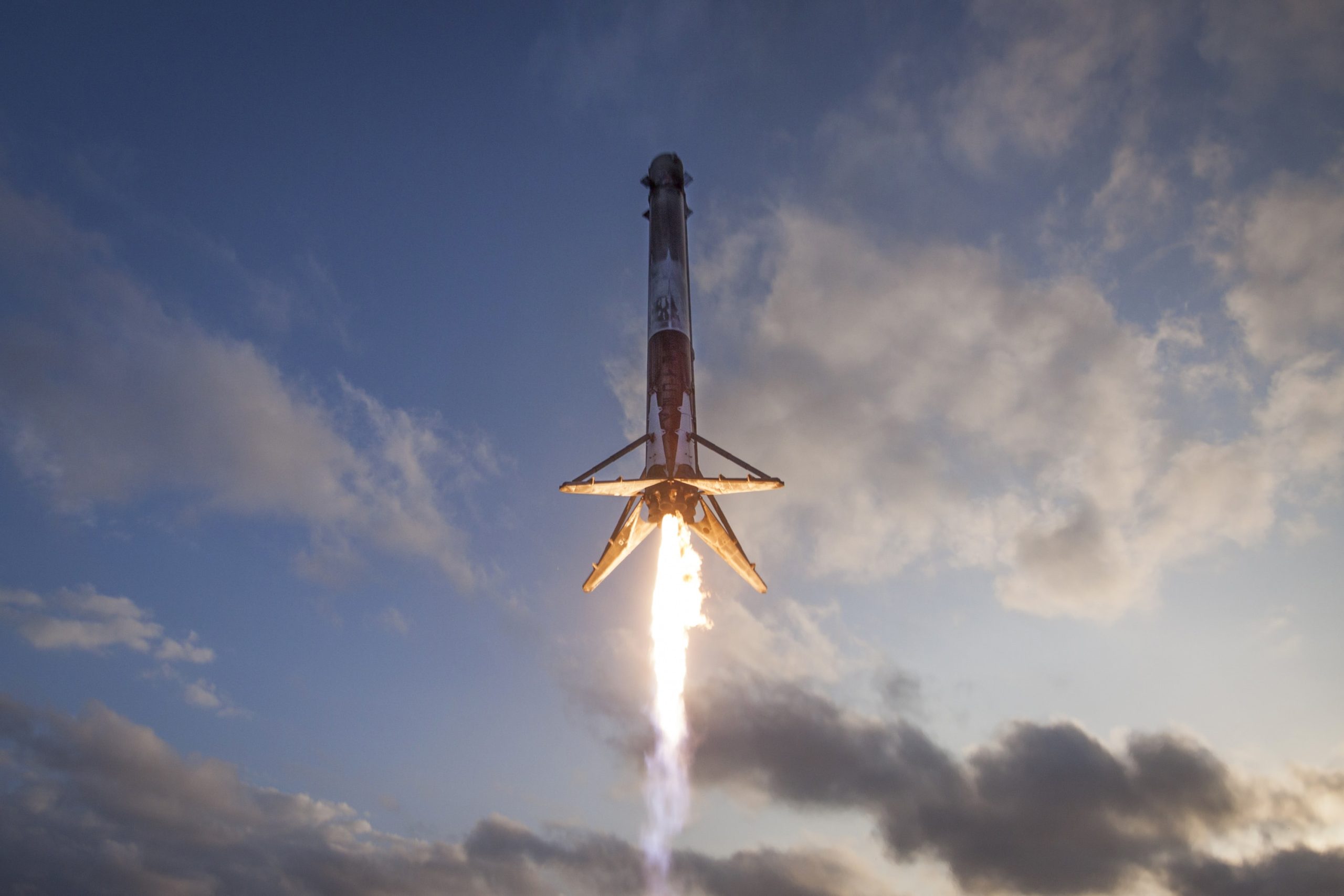
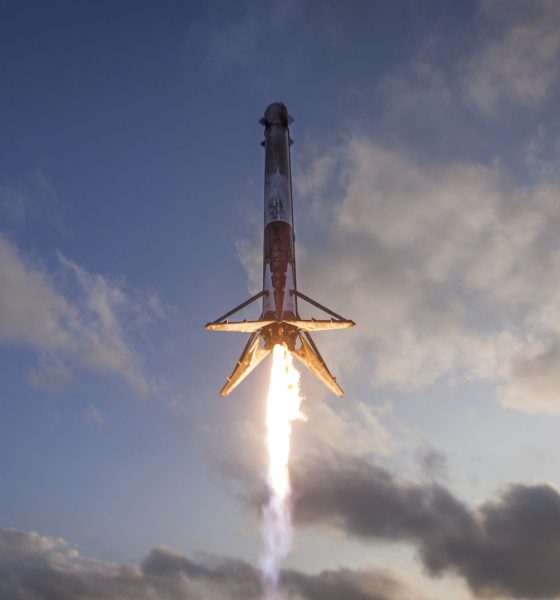
News
SpaceX proves viability of Falcon 9 reuse, SES agrees to 2nd launch on used booster
SES will launch its SES-11 satellite aboard a previously recovered Falcon 9 first stage, according to new information provided to Spaceflight Now.
The company, Luxembourg-based telecommunications provider, made history earlier this year by enabling the first commercial reuse of an orbital-class rocket with the launch of its SES-10 satellite. Weighing in at just under 5,300kg, SES-10 marked the heaviest geostationary launch SpaceX has yet to conduct while still recovering the first stage. SES-11 will be approximately 100kg heavier at launch, and will make for a thorough test of Falcon 9’s recovery limits if SpaceX chooses to attempt it.
While not guaranteed, it is expected that SES-11 will launch aboard the same first stage that lifted CRS-10 into orbit earlier this year. Launching Dragons to low Earth orbit (LEO) makes for a considerably cooler and less damaging recovery for Falcon 9 first stages, likely leading to an easier refurbishment process. SES-10 utilized the same first stage that launched SpaceX’s CRS-8 mission.
- CRS-8 also happened to mark the first successful ASDS recovery of a Falcon 9 booster. (SpaceX)
- While not fully accurate, given that Ariane 5 carries two satellites per launch, this chart is still a profound demonstration of the rapid progress SpaceX has made in ensuring a more competitive commercial launch industry. (SpaceX)
- SpaceX recovered core 1031, which launched CRS-10, in February 2017. (SpaceX)
Barely 16 months ago, CRS-8’s recovery marked the first ever sea-based recovery of a Falcon 9. Since that major accomplishment, SpaceX has recovered seven stages aboard their fleet of drone ships, landed four stages at their Florida-based landing pad, and successfully conducted the first two commercial reuses of recovered first stages. SES-11, currently scheduled for no earlier than September 27th, would mark the company’s third successful reuse. SES continues to demonstrate growing trust in SpaceX’s cutting-edge approach to shrinking launch costs, as the reused launch of SES-11 would mean that the telecom company has chosen to launch twice in a row on recovered Falcon 9s.
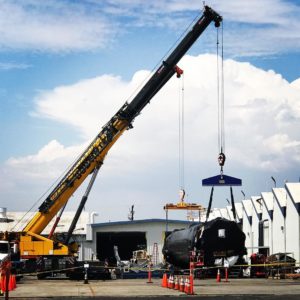
A first stage was captured near Hawthorne, CA, courtesy of an Instagram user. (Instagram /u/pooyagoudarzi)
After the successful launch of SES-10 in March of this year, SES was not yet willing to commit to a specific launch, although the company did state that they would be open to using reused stages again in the future. Three months later, SpaceX launched BulgariaSat-1, once again demonstrating successful reuse. It is clearer than ever that SpaceX’s relentless dedication to iterative technological improvement is making waves in both the company’s customer base and the launch industry worldwide. As SpaceX further lowers the cost of booster refurbishment, this disruption will only continue to grow.
Meanwhile, over on the West Coast, there are unconfirmed reports that the first stage that launched the Iridium-2 mission in late June – core 1036 – has recently arrive at SpaceX’s Hawthorne facilities to be refurbished for reuse at some later date. A photo was taken a handful of days ago and comments suggest that it is indeed 1036. Shotwell’s recent interview on The Space Show indicated 6 potential reuses in 2017, including the first launch of Falcon Heavy. FH, SES-10, BulgariaSat-1, and SES-11 account for 5 of those 6 reuses, making it likely that 1036 is aiming for another flight before the end of the year.
Source: Spaceflight Now

News
Tesla FSD fleet is nearing 7 billion total miles, including 2.5 billion city miles
As can be seen on Tesla’s official FSD webpage, vehicles equipped with the system have now navigated over 6.99 billion miles.

Tesla’s Full Self-Driving (Supervised) fleet is closing in on almost 7 billion total miles driven, as per data posted by the company on its official FSD webpage.
These figures hint at the massive scale of data fueling Tesla’s rapid FSD improvements, which have been quite notable as of late.
FSD mileage milestones
As can be seen on Tesla’s official FSD webpage, vehicles equipped with the system have now navigated over 6.99 billion miles. Tesla owner and avid FSD tester Whole Mars Catalog also shared a screenshot indicating that from the nearly 7 billion miles traveled by the FSD fleet, more than 2.5 billion miles were driven inside cities.
City miles are particularly valuable for complex urban scenarios like unprotected turns, pedestrian interactions, and traffic lights. This is also the difference-maker for FSD, as only complex solutions, such as Waymo’s self-driving taxis, operate similarly on inner-city streets. And even then, incidents such as the San Francisco blackouts have proven challenging for sensor-rich vehicles like Waymos.
Tesla’s data edge
Tesla has a number of advantages in the autonomous vehicle sector, one of which is the size of its fleet and the number of vehicles training FSD on real-world roads. Tesla’s nearly 7 billion FSD miles then allow the company to roll out updates that make its vehicles behave like they are being driven by experienced drivers, even if they are operating on their own.
So notable are Tesla’s improvements to FSD that NVIDIA Director of Robotics Jim Fan, after experiencing FSD v14, noted that the system is the first AI that passes what he described as a “Physical Turing Test.”
“Despite knowing exactly how robot learning works, I still find it magical watching the steering wheel turn by itself. First it feels surreal, next it becomes routine. Then, like the smartphone, taking it away actively hurts. This is how humanity gets rewired and glued to god-like technologies,” Fan wrote in a post on X.
News
Tesla starts showing how FSD will change lives in Europe
Local officials tested the system on narrow country roads and were impressed by FSD’s smooth, human-like driving, with some calling the service a game-changer for everyday life in areas that are far from urban centers.

Tesla has launched Europe’s first public shuttle service using Full Self-Driving (Supervised) in the rural Eifelkreis Bitburg-Prüm region of Germany, demonstrating how the technology can restore independence and mobility for people who struggle with limited transport options.
Local officials tested the system on narrow country roads and were impressed by FSD’s smooth, human-like driving, with some calling the service a game-changer for everyday life in areas that are far from urban centers.
Officials see real impact on rural residents
Arzfeld Mayor Johannes Kuhl and District Administrator Andreas Kruppert personally tested the Tesla shuttle service. This allowed them to see just how well FSD navigated winding lanes and rural roads confidently. Kruppert said, “Autonomous driving sounds like science fiction to many, but we simply see here that it works totally well in rural regions too.” Kuhl, for his part, also noted that FSD “feels like a very experienced driver.”
The pilot complements the area’s “Citizen Bus” program, which provides on-demand rides for elderly residents who can no longer drive themselves. Tesla Europe shared a video of a demonstration of the service, highlighting how FSD gives people their freedom back, even in places where public transport is not as prevalent.
What the Ministry for Economic Affairs and Transport says
Rhineland-Palatinate’s Minister Daniela Schmitt supported the project, praising the collaboration that made this “first of its kind in Europe” possible. As per the ministry, the rural rollout for the service shows FSD’s potential beyond major cities, and it delivers tangible benefits like grocery runs, doctor visits, and social connections for isolated residents.
“Reliable and flexible mobility is especially vital in rural areas. With the launch of a shuttle service using self-driving vehicles (FSD supervised) by Tesla in the Eifelkreis Bitburg-Prüm, an innovative pilot project is now getting underway that complements local community bus services. It is the first project of its kind in Europe.
“The result is a real gain for rural mobility: greater accessibility, more flexibility and tangible benefits for everyday life. A strong signal for innovation, cooperation and future-oriented mobility beyond urban centers,” the ministry wrote in a LinkedIn post.
News
Tesla China quietly posts Robotaxi-related job listing
Tesla China is currently seeking a Low Voltage Electrical Engineer to work on circuit board design for the company’s autonomous vehicles.

Tesla has posted a new job listing in Shanghai explicitly tied to its Robotaxi program, fueling speculation that the company is preparing to launch its dedicated autonomous ride-hailing service in China.
As noted in the listing, Tesla China is currently seeking a Low Voltage Electrical Engineer to work on circuit board design for the company’s autonomous vehicles.
Robotaxi-specific role
The listing, which was shared on social media platform X by industry watcher @tslaming, suggested that Tesla China is looking to fill the role urgently. The job listing itself specifically mentions that the person hired for the role will be working on the Low Voltage Hardware team, which would design the circuit boards that would serve as the nervous system of the Robotaxi.
Key tasks for the role, as indicated in the job listing, include collaboration with PCB layout, firmware, mechanical, program management, and validation teams, among other responsibilities. The role is based in Shanghai.
China Robotaxi launch
China represents a massive potential market for robotaxis, with its dense urban centers and supportive policies in select cities. Tesla has limited permission to roll out FSD in the country, though despite this, its vehicles have been hailed as among the best in the market when it comes to autonomous features. So far, at least, it appears that China supports Tesla’s FSD and Robotaxi rollout.
This was hinted at in November, when Tesla brought the Cybercab to the 8th China International Import Expo (CIIE) in Shanghai, marking the first time that the autonomous two-seater was brought to the Asia-Pacific region. The vehicle, despite not having a release date in China, received a significant amount of interest among the event’s attendees.
